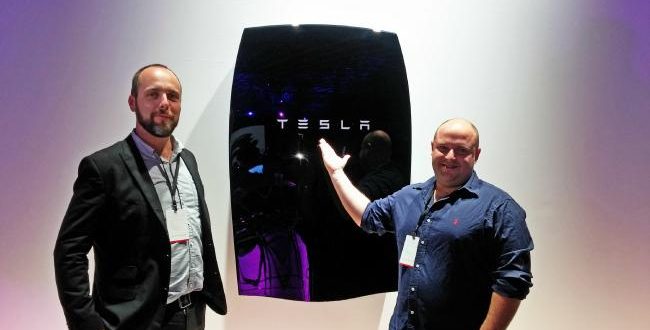Blackout fears in South Australia have led to a surge of interest in solar battery technology. While Malcolm Turnbull looks to promote the building of newer coal-fired power stations to address an energy supply shortfall, suppliers and installers say homes and businesses are taking the matter into their own hands.
Natural Solar, a reseller of Tesla Powerwall battery systems, says demand for battery power systems has risen 300 per cent in South Australia since September 28 last year, the day of the statewide blackout, more than in other states.
“There has been a direct link following the highly publicised statewide blackouts and residents exploring renewable energy solutions offering more stability and further independence from the grid,” chief executive Chris Williams says.
He says 98.5 per cent of Natural Solar customers based in SA have bought full backup power systems — up from 12 per cent before the event. Unlike a regular Tesla battery, a full backup system kicks in when mains power cuts out.
Although he doesn’t nominate figures, Redflow boss Simon Hackett says the blackout last year produced a strong rise in inquiries by companies that install Redflow’s ZCell batteries. “Calls immediately changed from focusing on self-consuming solar energy to blackout protection,” Hackett says.
He says users are now conscious of the need for power continuity. “We have one customer in Victoria who bought two ZCells, primarily to keep his medical centre running when everyone else’s lights go out.”
Williams cites an 850 per cent rise in SA small business exploring backup power options. “One hundred per cent of our customers in South Australia have said they have been affected by grid instability and power outages in some way in the past 12 months,” he says.
It’s likely that trend will accelerate with power retailers announcing a rise in prices. In SA customers consuming 5 megawatt hours are paying $117 to $261 more a year.
Many factors contribute to this. There’s the shortage of gas locally. Globally, power companies are not replacing old retiring coal-fired stations. Private sector investors have been reluctant to support new plants. The Prime Minister wants to turn this around but other countries are not necessarily adopting the same approach. Smog and pollution have been the drivers for China cancelling 103 coal plants, reported by The New York Times in January.
While getting cheaper, battery technology that stores solar and wind energy for later use isn’t ready to support the grid in times of high demand. Capacity is too small-scale although the technology is improving.
But renewable take-up is thriving at a local level. Last year’s Clean Energy Regulator’s report says there are 2.6 million small-scale renewable systems in nearly 15 per cent of Australian homes.
Last month Environment and Energy Minister Josh Frydenberg listed some of the findings in a media release. Large-scale renewables investment last year was five times greater than in 2015. Small-scale renewables investment saw 182,000 new installations last year, many in regional areas.
Rooftop solar panels and household hot water systems generated more than 5000 megawatts of power, nearly twice the size as the nation’s largest power station. And of 98 new power plants accredited last year, 86 were solar.
Natural Solar says that in the first five months of this year it sold almost five times more home energy packages than for the entire 2016.
“We have seen an increase in inquiries of over 140 per cent in the last few days alone due to the well publicised 20-25 per cent electricity bill increases for Australian households effective July 2017.”
One concern is the floated notion of raising power line rental charges as homes and businesses opt for solar. Hackett says that while this is an understandable commercial response, it risked exacerbating the problem of people leaving the grid. ”The mistake is that it treats batteries as a problem rather than an opportunity,” he said.
“While power companies may choose to charge these people a premium price for using the grid as a backup energy source for when the sun doesn’t shine for a while, there is a much better solution beyond that.
“This involves electricity companies actually buying the energy stored in consumers’ batteries to meet peak demand periods.” There was a need for regulatory changes and for energy companies to harness opportunities that batteries present.
AGL this year switched on an example of this: a virtual power station operating at West Lakes in Adelaide.
Reader comments on this site are moderated before publication to promote lively and civil debate. We encourage your comments but submitting one does not guarantee publication. We publish hundreds of comments daily, and if a comment is rejected it is likely because it does not meet with our comment guidelines, which you can read here. No correspondence will be entered into if a comment is declined.





